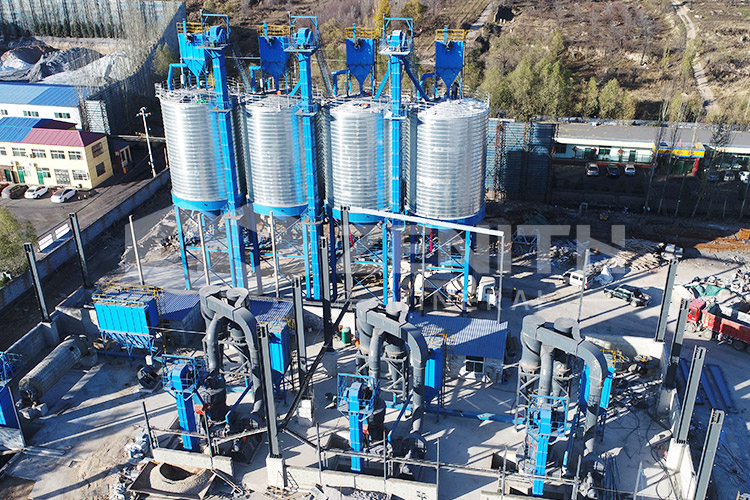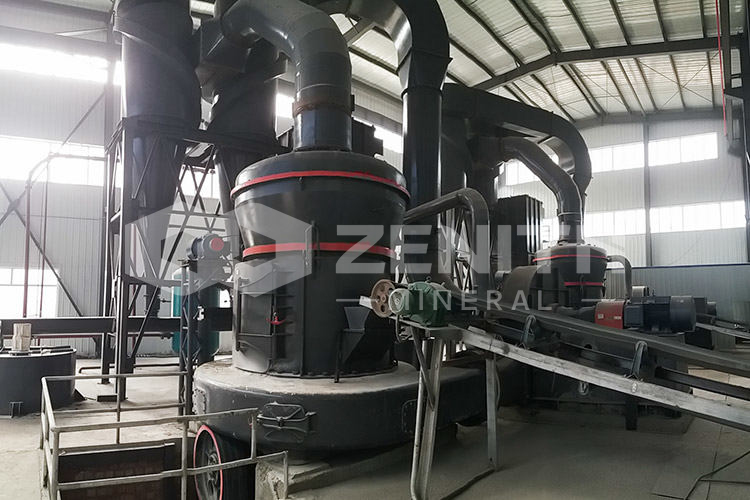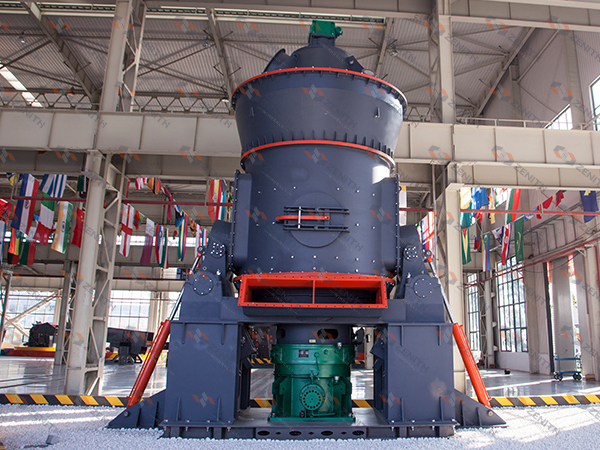Talc ultrafine pulverizer with a finished product fineness of 10 microns using ring roller mill
2025-11-11 20:56:02
In the world of industrial mineral processing, achieving consistent ultrafine powder with precise particle size distribution represents a significant technological challenge. For talc processing operations targeting a finished product fineness of 10 microns, the selection of appropriate grinding equipment becomes paramount to both product quality and operational efficiency. At Zenith Machinery, our extensive research and development in ring roller mill technology has yielded sophisticated solutions specifically engineered for such demanding applications.
Talc, with its characteristic softness and plate-like crystal structure, requires specialized grinding approaches to prevent over-grinding while maintaining product integrity. Our MTW European Trapezium Mill and LUM Ultrafine Vertical Grinding Mill have demonstrated exceptional performance in talc processing applications, consistently delivering products in the 10-micron range with narrow particle size distribution.

The engineering principles behind our ring roller mill technology focus on creating optimal conditions for controlled size reduction. The grinding mechanism involves multiple grinding rollers applying pressure against a stationary grinding ring, creating a bed of material that undergoes progressive comminution. This configuration allows for precise control over the grinding forces applied to the talc particles, preventing excessive heat generation and maintaining the mineral's natural properties.
What sets our grinding systems apart is the integrated classification technology that works in tandem with the grinding mechanism. The high-efficiency impeller fans in our MTW series mills achieve air induction efficiency of 85%, significantly improving the separation of fine particles from the grinding chamber. This ensures that only properly sized particles proceed to collection, while oversize material returns for further grinding, creating a closed-loop system that optimizes energy utilization.
From an operational perspective, the advantages of our ring roller mill technology for talc processing are substantial. The modular impeller adjustment system allows operators to fine-tune product fineness without requiring major mechanical modifications. This flexibility is particularly valuable for operations that may need to adjust product specifications for different market requirements. The energy efficiency of these systems represents another critical advantage, with consumption rates up to 60% lower than conventional ball mills of equivalent capacity.
_1762865762874.jpg)
Our LUM Ultrafine Vertical Grinding Mill incorporates advanced German powder separation technology and Taiwanese grinding roller expertise, creating a system capable of producing talc powders with exceptional purity and consistency. The hydraulic adjustment system enables precise control over grinding pressure and rotational speed, parameters that directly influence the final product characteristics. The reversible design of critical components extends service life and simplifies maintenance procedures, reducing downtime and operational costs.
Environmental considerations have been integral to our mill design philosophy. The fully enclosed systems operate under negative pressure conditions, eliminating dust emissions and ensuring workplace safety compliance. The integrated pulse dust collection systems capture fine particles with efficiency rates exceeding 99%, meeting stringent international environmental standards while maximizing product recovery.
For talc processors targeting the 10-micron range, the automation capabilities of our grinding systems provide additional operational benefits. The intelligent control systems enable remote monitoring and adjustment of critical parameters, including feed rate, grinding pressure, and classifier speed. This level of automation not only reduces labor requirements but also ensures consistent product quality through continuous process optimization.
_1762865762875.jpg)
The material purity achieved through our grinding technology is particularly important for talc applications in premium sectors such pharmaceuticals, cosmetics, and food-grade products. The controlled grinding environment minimizes iron contamination, preserving the natural whiteness and chemical composition of the talc. This aspect is crucial for maintaining product value in high-specification markets where purity and consistency are non-negotiable requirements.
Our global experience in talc processing has demonstrated that successful operations depend not only on the grinding equipment itself but on the complete system integration. From material feeding and grinding to classification and collection, each component must work in perfect harmony to achieve the desired product characteristics. The comprehensive approach we take to system design ensures that all elements are optimized for the specific requirements of talc processing at 10-micron fineness.

As market demands for finer talc products continue to evolve, our commitment to technological innovation remains steadfast. The ongoing development of our ring roller mill technology focuses on enhancing energy efficiency, increasing automation capabilities, and expanding the range of achievable product specifications. For operations seeking to produce high-quality 10-micron talc powder consistently and efficiently, our grinding solutions represent the culmination of decades of engineering excellence and practical field experience.
Frequently Asked Questions
What is the typical energy consumption for producing 10-micron talc powder with your ring roller mills?
Our MTW and LUM series mills typically consume 30-60% less energy compared to traditional ball mills when producing talc powder at 10-micron fineness, depending on material characteristics and production capacity.
How do you prevent contamination of the talc during the grinding process?
We use specialized wear-resistant materials for grinding components and implement effective sealing systems to minimize iron contamination. The grinding chambers are designed to operate without lubricants that could contact the material, ensuring product purity.
What maintenance intervals are required for the grinding rollers and rings?
Under normal operating conditions, grinding components typically require inspection every 800-1,000 operating hours, with replacement intervals varying based on material abrasiveness but generally exceeding 5,000 hours for talc applications.
Can the same mill process different grades of talc without cross-contamination?
Yes, our mills feature comprehensive cleaning systems and can be purged between different talc grades. The modular design allows for thorough cleaning of all contact surfaces when switching between material types.
What level of automation can be achieved with your grinding systems?
Our systems support full automation including remote monitoring, automatic adjustment of operational parameters, predictive maintenance alerts, and integration with plant management systems for complete operational control.
How does your equipment handle variations in feed material moisture content?
Our mills can be equipped with integrated drying systems that maintain optimal processing conditions despite moisture variations. The grinding process generates some heat, and additional hot air can be introduced when necessary to manage moisture.
What particle size distribution can be expected when targeting 10-micron talc powder?
Our grinding systems typically achieve D90 values of 10 microns with narrow particle size distributions. The advanced classification systems ensure that over 90% of particles fall within the target size range, with minimal oversize or undersize fractions.








